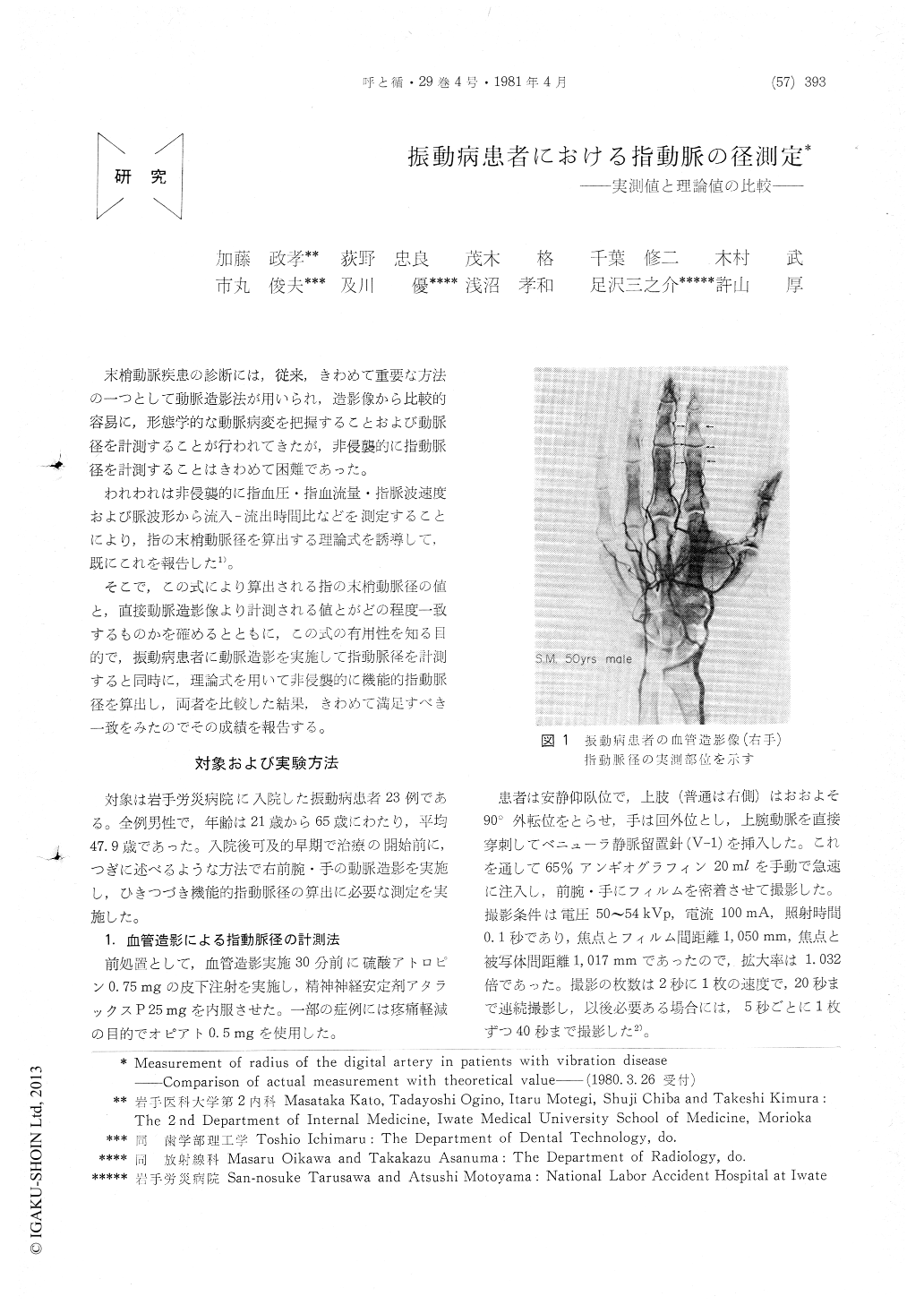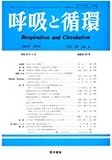Japanese
English
- 有料閲覧
- Abstract 文献概要
- 1ページ目 Look Inside
末梢動脈疾患の診断には,従来,きわめて重要な方法の一つとして動脈造影法が用いられ,造影像から比較的容易に,形態学的な動脈病変を把握することおよび動脈径を計測することが行われてきたが,非侵襲的に指動脈径を計測することはきわめて困難であった。
われわれは非侵襲的に指血圧・指血流量・指脈波速度および脈波形から流入—流出時間比などを測定することにより,指の末梢動脈径を算出する理論式を誘導して,既にこれを報告した1)。
Recently, an approximate equation by which radius of the digital artery was calculated at the diastolic phase was derived and reported in the previous paper. Values of radius of the digital artery were calculated by using this equation in 23 patients with vibration disease (theoretical values) and these were compared with those measured directly by a magnifying glass with scale on roentogenograms performed angiographically on the same patients with vibration disease (actual measurement). Mean values of radii of the digital arteries at the systolic and the diastolic phase were 0.25 and 0.15 mm respectively, and that of the actual measurement was 0.30 mm. Therefore, the theoretical value at the systolic phase was closer resemblance to the actual measurement than to that at the diastolic phase.
There were linear and remarkable relationships between radius of the digital artery calculated theoretically at the systolic phase and that at the diastolic phase, and between the former and the increment of radius by pulsation (between systolic and diastolic), respectively. There was also an exponential relationship between radius of the digital artery at the diastolic phase and rate of the change in radius induced by pulsation.

Copyright © 1981, Igaku-Shoin Ltd. All rights reserved.


